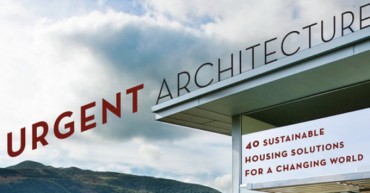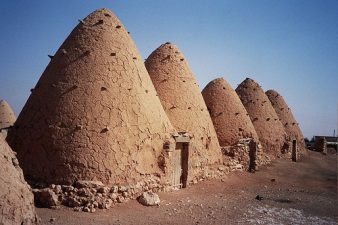Israeli design team Tridom won honorable mention in NASA’s 3D Printed Habitat Challenge for their ‘Bubble Base’ building, a prototype for future human habitation on Mars. The design competition invited solutions to the “need for safe, secure and sustainable housing on earth and beyond.” This goes beyond Hollywood set design for The Martian (shown above) or Interstellar. It’s also grounded in rapidly emerging technologies, with immediate application.
Tridom team leaders Yaron Schwarcz and Lior Aharoni, assisted by Bezalel Academy of Arts and Design architecture graduate Helen Wexler, presented a design of a flexible structure that is inflated with a small amount of liquefied natural gas once. A swarm of construction drones would cast quartz-rich, Martian sand into building blocks that would anchor the domed structure around it’s base. (See image of ‘Bubble Base’ below.) Almost all of the design teams used robots or drones for their building assembly process.
Designers had to address environmental concerns specific to Mars, such as radiation exposure and extremely high temperatures, while including fairly standard residential elements such as gardens, communal and private spaces, and a gym.
Specialists in construction robotics, Tridom has extensively researched 3D-printed sustainable housing. They are currently developing a frameless 3D printer which extrudes recycled building cement through a robotic arm, reducing labor costs and construction waste.
Shelter is one of our most basic and crucial needs, but packing materials and equipment to construct housing on a distant planet would take up valuable cargo space that could be used for other life-sustaining provisions. Ideally, habitat would be constructed from indigenous materials, combined with recycled waste – which reduces transport impacts whether the project is terrestrial or in outer space. Adding 3D manufacturing to the mix allows added flexibility, as bespoke elements of the building can be manufactured on site.
“The future possibilities for 3-D printing are inspiring, and the technology is extremely important to deep space exploration,” said Sam Ortega, NASA program manager. “This challenge definitely raises the bar from what we are currently capable of, and we are excited to see what the maker community does with it.”
The NASA challenge, in cooperation with the National Additive Manufacturing Innovation Institute (America’s 3D Printing Institute) is a $2.25 million competition to design and build a 3D printed habitat for deep space exploration, but – like most NASA research and development – the results will also be applied to sustainable housing solutions and evolving construction technology here on Earth.
Geopolitical instability, climate change, and ballooning global population could make the mass human migration underway from the Middle East to Europe seem like a stroll along the Champs Elysee. Safety and security should be basic human rights, but clean water and adequate food are essential human needs. The wars that will result when out taps are dry and our cupboards bare will make battles fought over religion and energy pale by comparison. Science is looking to space for solutions.






Utterly insane assuming life on Earth survives a dead ocean.